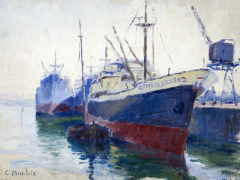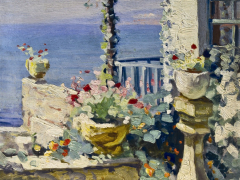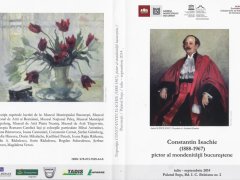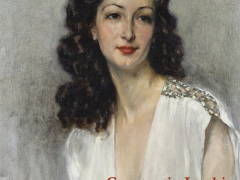Last updated: 15 July 2014
An important retrospective exhibition, “Constantin Isachie (1888-1967) – a painter of Bucharest’s social life”, organised by the Bucharest Municipality Museum, together with the Federation of Romanian Associations, Centres and Clubs for UNESCO and the Art Collectors’ Society in Romania was inaugurated on Thursday, July 3, 2014 at the Sutu Pallace, located in Piata Universitatii.
The organisation of this exhibition, open to the large public until September 28, 2014, comprising over 80 of the artist’s most valuable works, was possible thanks to the support granted by the GRUIA DUFAUT Law Office, involved in the fundraising for this important cultural event.
Constantin Isachie’s works were largely appreciated by the critics in the interwar period and many of his works are present in the heritage of the Romanian National Art Museum, of the Bucharest Municipality History and Art Museum, the National “Peles” Museum, as well as other museums in the country (Piatra Neamt Art Museum, Campulung Municipality Museum, Targoviste Art Museum) and in several private collections in Romania and abroad.
During the 10 years following his debut as an artist, in 1924, Constantin Isachie had six personal exhibitions. From the very beginning, he is appreciated in the highest social circles of the Romanian capital and receives important portrait orders: Queen Mary (1936), former governors of the National Bank – such as Mihail Manoilescu and Constantin Anghelescu (1939), high clerics, among which the Bishop Vasile Aftenie, important figures of the artistic world, such as conductor George Enescu, founder of the George Enescu Festival etc.
«He uses a post-impressionist style for painting country landscapes and landscapes from France, England, Belgium, Spain and Croatia, by adapting his style to the local specificities; he paints English mists in delicate and transparent shades of grey or architectures masterfully-cut by the bright light in the South. His still life paintings are dominated by floral bouquets, with a powerfully individualised composition, often based on asymmetry, but also suave sets of decorative objects, proving its virtuosity in painting transparencies, radiances and reflections. These works are accompanied by a remarkable gallery of portraits and nudes, in either a realistic style, or a style inspired by the French or English schools. Some of these works have a fashionable touch specific to the inter-war period; this element gives Isachie’s works an unique vintage atmosphere”; underlines Ms. Mihaela Varga, PhD.
The organisation of this exhibition was supported by the GRUIA DUFAUT Law Office and several other sponsors, such as: Dacia, Groupama, Lafarge and Tadis Agro.



